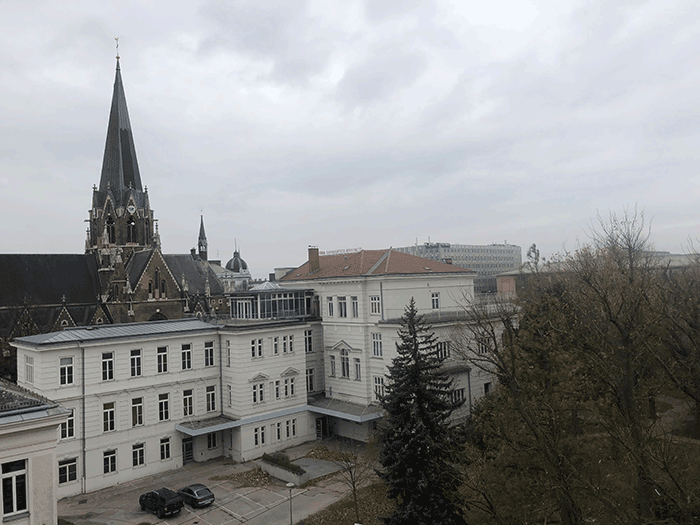

Lately I have been feeling a sense of déjà-vu. Partly, this may be the pandemic blues. In Vienna, gray skies hang over gray news, as they have for two winters. There is something inherently repetitive about epidemic disease: the curve goes up, the curve does down, the curve goes up again; the same stories, the same anxieties, the same losses, the same debates, the same frustrations. A lot has changed since March 2020. But I can’t shake the feeling that a lot keeps repeating itself too. Here in Austria, the numbers are the worst they have been since, well, exactly one year ago — actually, worse.
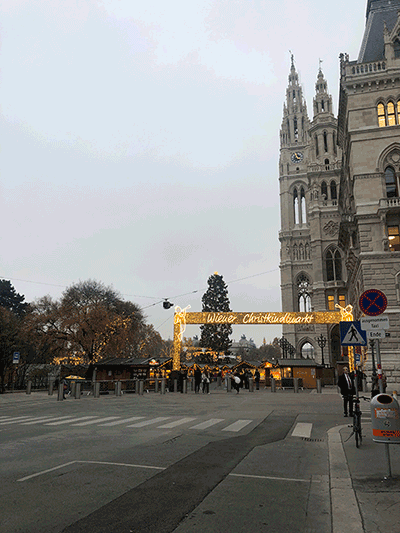 It’s possible I’m also to blame for my own feelings of eternal recurrence. For the second time in a fall semester marked by rising COVID cases in Austria, I am teaching my course “Plague and Climate Change in the Middle Ages” at the University of Vienna. That part of my déjà-vu, at least, is a happy repetition.
It’s possible I’m also to blame for my own feelings of eternal recurrence. For the second time in a fall semester marked by rising COVID cases in Austria, I am teaching my course “Plague and Climate Change in the Middle Ages” at the University of Vienna. That part of my déjà-vu, at least, is a happy repetition.
I proposed this course before the pandemic. Back then, in 2019, when the word “coronavirus” meant little to me, I considered omitting epidemic disease from the course, and focusing entirely on climate change from the Roman Optimum to the Little Ice Age. Climate is a big topic as it is. But on a whim, I changed my mind. I couldn’t really tell you why. Interesting to think how life sediments around little decisions like that.
The course is what we here at the University of Vienna call a “Guided Reading” (the name, even in German, is kept in English, as in, “Guided Readings können themenorientiert sein”). The idea is to give scope to close reading of primary and secondary sources, as one might in a seminar, but at an introductory level. For those familiar with large US universities, basically it is as if the discussion section of a lecture course detached itself, like a pedagogic plasmid. Assignments are papers on the shorter side. Class is organized around discussion. Enrollment is capped at 25. At a university of 90,000 undergraduates with a grand tradition of lecture courses, Guided Readings offer a cozy classroom experience. They are very popular with our students.
Before developing this course, I had covered both plague and climate change in other classes on medieval history. Both topics haunt the period. The Middle Ages as they are conventionally defined (c. 500–1500) are bookended by bubonic plague pandemics. The “First Pandemic” lasted from the sixth century to the eighth, beginning with the “Justinianic Plague” (c. 541–544). The “Second Pandemic” lasted from the thirteenth century to the mid-nineteenth, beginning with the “Black Death” (c. 1346–1353), although the historian Monica Green has recently argued from genetic data that the Second Pandemic’s origins are to be found in the 1200s in the Mongol empire.
The Middle Ages are also marked by three nonanthropogenic climate anomalies (periods of extended deviation in temperature, humidity, and circulation patterns): the Late Antique Little Ice Age (c. 536–660), the Medieval Climate Anomaly (c. 870–1300), and the Little Ice Age (c. 1300–1850). These anomalies affected climate variously in different parts of the world, in ways that are still being figured out from proxy evidence as varied as tree rings, ice cores, stalactites, and ancient bivalves. In Europe, at any rate, medieval history starts cold and ends cold, but in the middle, things were warm, wet (in the north), and agriculturally enabling.
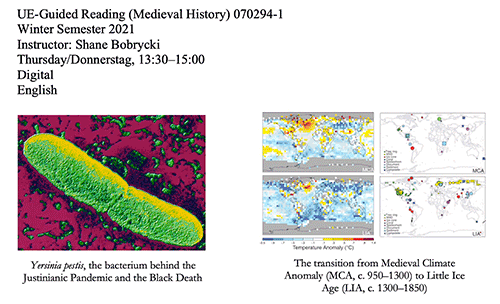 Students had always been intrigued by the walk-on roles of plague and climate change in my other courses. There was always much to discuss about the nature of the evidence (in addition to familiar texts, such unfamiliar things as human remains, ancient DNA, pollen, tree rings, glacier ice, etc.). Even more exciting were the theoretical challenges of incorporating huge exogenous factors into historical narratives. So a standalone course seemed like a good idea. I asked advice from colleagues who had taught similar courses, scouted online, and drafted a rough syllabus.
Students had always been intrigued by the walk-on roles of plague and climate change in my other courses. There was always much to discuss about the nature of the evidence (in addition to familiar texts, such unfamiliar things as human remains, ancient DNA, pollen, tree rings, glacier ice, etc.). Even more exciting were the theoretical challenges of incorporating huge exogenous factors into historical narratives. So a standalone course seemed like a good idea. I asked advice from colleagues who had taught similar courses, scouted online, and drafted a rough syllabus.
And then my planned course suddenly became a lot more topical.
The first time I taught “Plague and Climate Change,” in Winter Semester 2020, we were already pandemic professionals. The rocky first COVID semester was past us, we were getting used to videoconferencing. If anything, I think students now in COVID semester 4 seem a bit more tired than in COVID semester 2. There was a lot of exhaustion and disappointment back then, especially since the semester had begun with hope for in-person classes, but there were also hints of that odd giddy energy — the sense, almost, of being tested by history — that occasionally marked the first COVID semester.
As is usually the case, the class was a mix of Austrian students from all over the country and international students. This is one of the delights of the University of Vienna. It was clear from the start that the students were especially ready to tackle the plague-side of the course, almost as if the class was an opportunity to strike back against pandemics by studying them. At times I felt the climate theme had to struggle for student attention.
A year later, in the second iteration, I get the impression that student interest is more evenly balanced between both topics. So let’s start with plague, and move on to climate.
We read some of the famous sources for the major medieval pandemics. For the First Pandemic (Justinianic Plague), it was Procopius (Wars, 2.22–23) on how the disease “enveloped the whole earth” in the early 540s. I usually give summaries of John of Ephesus, whose Syriac account of the same outbreak is perhaps the most apocalyptic of all. For the Second Pandemic (Black Death), it was Petrarch, who asked “Will posterity believe these things?” and Boccaccio, whose Decameron begins with his “Happy Brigade” of ten youthful story-tellers deciding to leave Florence amid the inconceivable horrors of the plague in 1348 (“In the face of the plague’s onrush, all the wisdom and ingenuity of man were unavailing”).
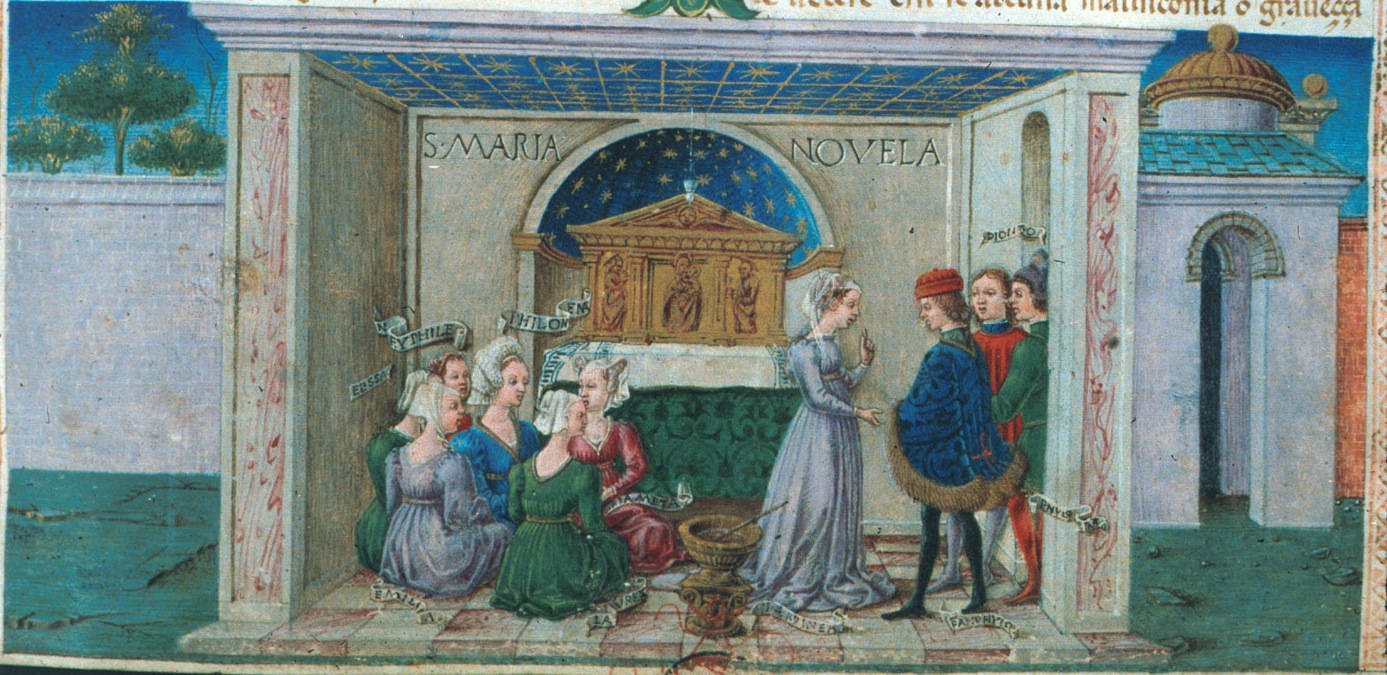
We also looked at different kinds of sources. We read scientific reports on a Bavarian couple in their early twenties (distantly related, as geneticists have recently revealed), a young woman and a young man nicknamed AE1175 and AE176 by the archaeologists, who died of bubonic plague and were buried side by side fourteen centuries ago. We looked at the stuff with which they were interred: a gilded disc fibula, a necklace of some 32 glass beads, a bronze fibula in Roman style, a curious twisted bronze spiral, a flint, some nails, and knives for both (to paraphrase Katharine Hepburn in The Lion in Winter, “it was the sixth century; they all had knives!”). We tried to imagine who these people were in life. I could not help thinking that they had died at the very age of the students whose faces I was seeing in the little boxes on my screen.
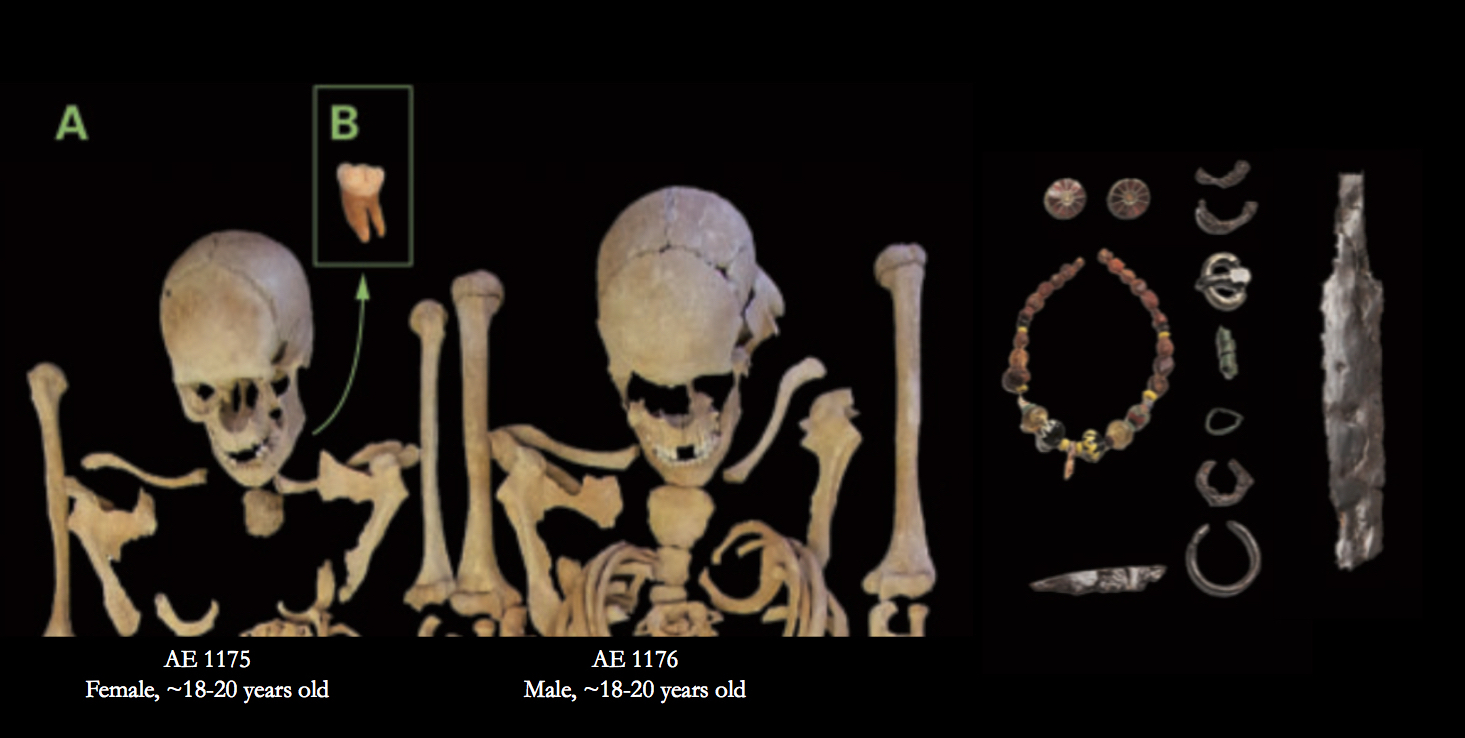
All that was part of the plan as of 2019, when I conceived of the course. But as I sat down, over the summer of 2020, to decide what actually to put on the syllabus, I realized how much I had prioritized what you might call First Wavers. By that I mean the writers who reported on the first wave of a plague pandemic, usually in lengthy meditative accounts. They spoke of the winepress of God’s wrath, the near destruction of mankind, an unheard-of calamity, a horror so great that the future would deny it ever happened. Of course, AE1175 and AE1176 were an exception — we cannot know exactly when they died, so it may have been during the first arrival of plague or a later recurrence — but I realized I was omitting a lot of the story.
Plague, like COVID-19, is a story of repetitions. After both 541 (Procopius) and 1348 (Petrarch, Boccaccio), this epidemic disease recurred, at unpredictable intervals, in transregional outbreaks and localized ones, for centuries. For the Second Pandemic, where data are more complete, it has been estimated that there was an outbreak of plague somewhere in Europe every year between 1347 and 1670. What started as “a disease which came close to extinguishing the whole human race” (Procopius), for which “all the advice of physicians and all the power of medicine were profitless and unavailing” (Boccaccio), turned into a grim companion. Whole generations knew it not as a terrible novelty but an old affliction. Moreover, plague’s second act was marked, as the Italian economic historian Guido Alfani argues, by fateful asymmetries. During the Second Pandemic, Southern Europe — particularly Italy — was consistently worse affected. I wanted to talk about that story with my students too.
The First Wavers are verbose, detailed, reflective. Procopius’ account of the plague of 541 runs for several pages, as does that of the Syriac-speaking John of Ephesus (whose account of the same outbreak is probably the single longest for the First Pandemic). Petrarch wrote several philosophical letters about “that 1348” and Boccaccio’s famous description takes up the whole introduction of his Decameron. Particularly if one wants to give these sources their due, it is necessary to budget considerable time in a reading/discussion course.
Contrast them with a pair of Late Wavers from the First and Second Pandemics. Same disease (from what we can tell), different kind of record:
Τούτῳ τῷ ἔτει γέγονε θανατικὸν μέγα, “In this year there arose a great mortality.”
–Byzantine chronicle for the 6192nd year of the world (i.e. CE 699/700).Hic incepit pestis, “Here is where the plague started.”
–English parish register for July 11, 1564.
No philosophizing, no harrowing account of the breakdown of society — how loved ones distrusted one another, how burials were disrupted, how labor was suddenly more expensive, how prices rose and shortages ensued, how you never saw people wearing uniforms — no real details of any kind. Just laconic reports, recounting plague outbreaks of no special fame, and then moving on to other business.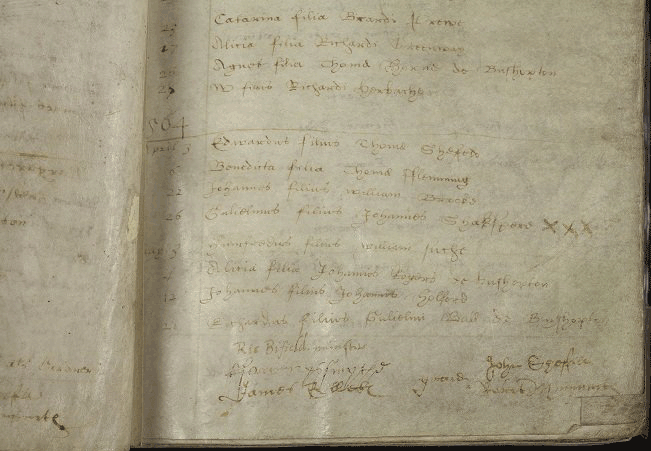 (The second one is a little noteworthy, since this document is from Stratford-upon-Avon, and one of the survivors of this summer plague was the three-month-old “William, son of John, Shakespeare” whose baptism is recorded earlier in the register.)
(The second one is a little noteworthy, since this document is from Stratford-upon-Avon, and one of the survivors of this summer plague was the three-month-old “William, son of John, Shakespeare” whose baptism is recorded earlier in the register.)
In the second COVID semester (fall 2020), these shorter notices suddenly felt more interesting and more worthy of discussion — were we not, by then, ourselves Late Wavers by the attention-span-standards of our age? — and my students felt so too. They read the Late Wavers with what a medievalist once called imagination créatrice, a “creative imagination” that filled in the silences of the record — and asked where those silences came from. They felt sympathy for people, like them, who faced something large and frightening on the path before them. This is a risky mode of historical analysis. Without discipline, creative imagination becomes presentism, nostalgia, fantasy. But it is also important to sit in such silences, to think about bare bones until we see humans, as we had to do with AE1175 and AE1176. In reading the weary, laconic Late Wavers — the seventh-century bishop briskly warning his colleague to blockade the roads because plague was raging at Marseille, the Health Board officials in seventeenth-century Italy dashing off quick letters while monitoring an outbreak of plague-like illness in a nearby village — my students were energized.
The Late Wavers, in a sense, stole the course. And to be fair, there are more prolix examples than the two quoted above, with rich and all too resonant details. Gregory of Tours (d. 594) and Evagrius Scholasticus of Antioch (d. circa 594) both lived their whole lives under the shadow of the First Pandemic on opposite ends of the Mediterranean. Both were scarred by it in different ways, and both incorporated the disease prominently into their Histories. Gregory’s extended discussion of false cures — “ligatures” and “charms” applied by wizards, communion wafers eaten as medicine or prophylaxis — especially caught my students’ attention. It reminded them of what they call the “Querdenker” (the “lateral thinkers”), the standard German name for anti-Corona activists (after the self-designation of one Stuttgart protest group). My students were not the only ones. When I presented some of these stories to a NIMH seminar of physicians at Johns Hopkins (a seminar primarily focused on the mental effects of the HIV epidemic), one doctor felt enough sympathy with the sixth-century bishop that he cried out over Zoom: “this is just like patients today!” In the Second Pandemic, physicians, diarists, novelists, and demographers recount details that are lacking among the First Wavers. There is a lot to make you gasp. For instance, take this evocation of the moral struggles felt by early modern Health Boards considering lockdowns by economic historian Carlo Cipolla:
As the correspondence of the Boards abundantly shows, the Officers felt that in the face of disease there had to be a loyalty to supreme and universal human interests. All this was clear, but it was not so simple. If a city experienced an outbreak of plague, the Officers knew that they had to inform their colleagues in other places, but they also knew that their move would immediately activate reactions and measures which would have disastrous economic consequences for their own country. Moral obligation toward mankind in general in these cases meant unspeakable economic losses for their country, community, fellow citizens, and friends through the loss of markets, massive unemployment, and starvation.
-Carlo Cipolla, Public Health and the Medical Profession in the Renaissance (Cambridge, 1976), 53–54.
The world of late waves was where this disease exerted its greatest statistical effects on human populations, in the same way that 2021, not 2020, is statistically the true year of COVID. It was the world in which people better understood the threat — the shape of it — and also denied, forgot, defied, or indulged in fantasies about it. Human minds are usually drawn to salience, to trends. It was good to spend more time with patterns.
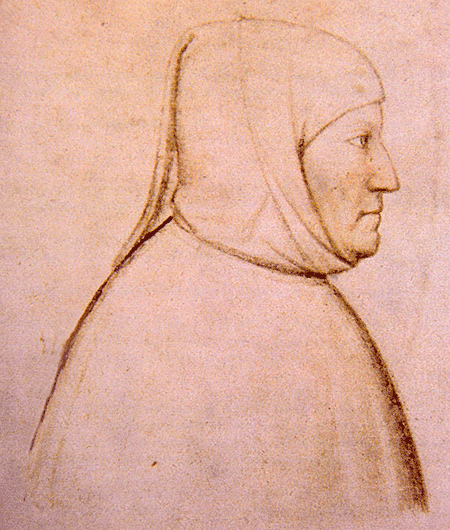 I was also interested to see how my students’ interest in Late Wavers gradually brought our two course themes closer together. As they mused on the Late Wavers’ enduring relationship with plague, they began to notice how similar it felt to our relationship with climate change. The threat was enormous, recognized — but it was also draining to dwell upon. Petrarch, who went on for pages about the first wave of 1348, barely wrote anything about the second wave of 1361, in which his illegitimate son Giovanni, “who lived but a few happy days in his life,” died at Milan, aged 25, in the middle of the night between the 9th and the 10th of July.
I was also interested to see how my students’ interest in Late Wavers gradually brought our two course themes closer together. As they mused on the Late Wavers’ enduring relationship with plague, they began to notice how similar it felt to our relationship with climate change. The threat was enormous, recognized — but it was also draining to dwell upon. Petrarch, who went on for pages about the first wave of 1348, barely wrote anything about the second wave of 1361, in which his illegitimate son Giovanni, “who lived but a few happy days in his life,” died at Milan, aged 25, in the middle of the night between the 9th and the 10th of July.
Climate is not only draining, it’s a mind-bender. In climate history, one is constantly leaping from the micro to the macro. As many environmental historians warn, humans tend to think in terms of weather, not climate; they register the particular, the anecdotal, the subjective, at the expense of statistical abstraction. That is only human. After all, one bad storm in a statistically temperate year may reasonably dominate your memory if it destroys your home, devastates your crops or livestock, or kills your friends and family. Even today, with complex empirical models for abstracting “the climate” of the earth in a single year, it is often easier to think about climate change in terms of salient catastrophes: the fires, the floods. In an age without the models and evidence-gathering of modern climatology, the risk is higher still.
An example, from the class. Gregory, the bishop of sixth-century Gaul, reported that 588 was particularly rainy. Dendroecology suggests exactly the opposite: the trees of Gaul were parched that year, to judge by their rings. What explains the divergence? We happen to know that Gregory was, to his chagrin, traipsing around on royal business in late winter/early spring 588. It is easy to imagine how several dismal weeks of travel in in the rain — incidentally, these trips involved close-calls with two epidemic outbreaks, a kind of dysentery in the Moselle region and bubonic plague itself coming up the Rhone — might result in the bishop’s historical summary: “in that year during the early spring there were strong rains.” But woe to the armchair climatologist who prioritizes this statement without consulting the testimony of the trees.
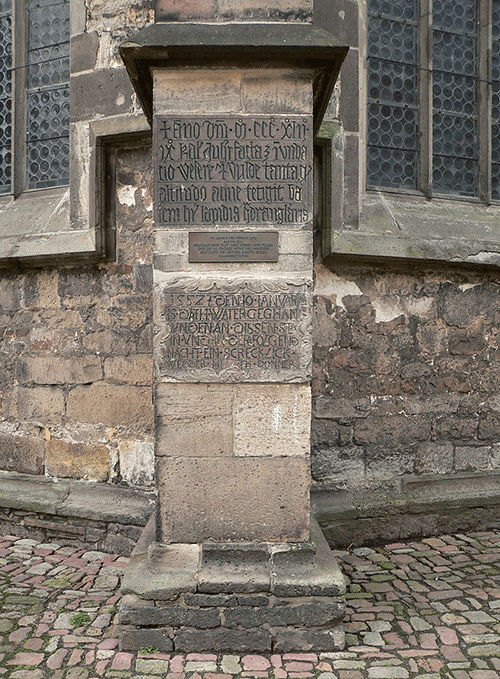 I found that my students were usually pretty enthusiastic — at first — with exploring such quandaries, which raise all kinds of historical and philosophical questions about subjectivity, evidence, and scale. But after a few minutes, these discussions often seemed to weary them. Students like to talk about firsthand accounts of flooding disasters like the St Magdalene’s Flood or Magdalenenhochwasser of July 1342, which were triggered by massive rainfalls that struck Central Europe practically 679 years to the month of last summer’s flooding. They are interested to learn that climatologists posit that this medieval disaster was — in the short term — the work of a low-pressure system rising up from the Mediterranean, and ascribe it — in the long term — to a statistical weakening of the weather phenomenon known as the North Atlantic Oscillation associated with the start of the Little Ice Age. But connecting these three levels in one historical model — human experience, weather event, deeper climatic pattern — is exhausting. Last year these discussions often started out electric, and ended in quiet aporia.
I found that my students were usually pretty enthusiastic — at first — with exploring such quandaries, which raise all kinds of historical and philosophical questions about subjectivity, evidence, and scale. But after a few minutes, these discussions often seemed to weary them. Students like to talk about firsthand accounts of flooding disasters like the St Magdalene’s Flood or Magdalenenhochwasser of July 1342, which were triggered by massive rainfalls that struck Central Europe practically 679 years to the month of last summer’s flooding. They are interested to learn that climatologists posit that this medieval disaster was — in the short term — the work of a low-pressure system rising up from the Mediterranean, and ascribe it — in the long term — to a statistical weakening of the weather phenomenon known as the North Atlantic Oscillation associated with the start of the Little Ice Age. But connecting these three levels in one historical model — human experience, weather event, deeper climatic pattern — is exhausting. Last year these discussions often started out electric, and ended in quiet aporia.
There is a caveat here, a thought I owe to discussions with students in office hours. Many are the early medieval chronicles that offer, as the sole comment on an entire year, something like: “Hard, lacking fruit” (709 CE) or “Great fertility of the year” (722 CE). Skeptical climate historians often cite such annalistic reports as proof of the irremediable subjectivity of medieval records. Woe to the armchair climatologist. But you could also argue that agricultural outcomes were a kind of abstract model of a year’s weather, indeed, the best that most medieval societies had at their disposal. Crop failure can, of course, be the result of freak weather events (less so, perhaps, crop success), so there are limits, but there is a way in which the plant-world patiently took notes on the year’s weather patterns, and shared the results at harvest time.
I am a little over half-way, in November 2021, into the second iteration of the course. Much has changed. In one year, it is astonishing how much new material has been published. This is one of the excitements of teaching a topic that trucks with the fast-living hard sciences. Last week, for instance, I swapped in a reading that is, at the time of writing, technically a pre-print (“advanced access”), it is so hot off the press.
But the more noticeable change is a certain world-weariness in my students, and perhaps in me as well. This week, we’re back to climate history and its big questions. We’ll see how that goes. A fourth lockdown looms over Austria. Corona-protests have broken out here and elsewhere. The weather has been gloomy. My students are putting on a good face, but they are tired, I am tired, and these are subjects that tax the mind and the heart. Still, if there is a theme that unites all others in this course, it is the importance of finding the strength to go on. One lesson of “Plague and Climate Change in the Middle Ages” is that we humans are always confronted with what the plague-born poet called “mountainish inhumanity.” In retracing the craggy paths taken by others long ago, we train our own reason and sympathy to resist the sapping power of inhuman scale. In this way, another year in, I hope we can teach each other, my students and I, to safeguard our humanity even amid the mountainous hardships around us.

Shane Bobrycki
November 2021
